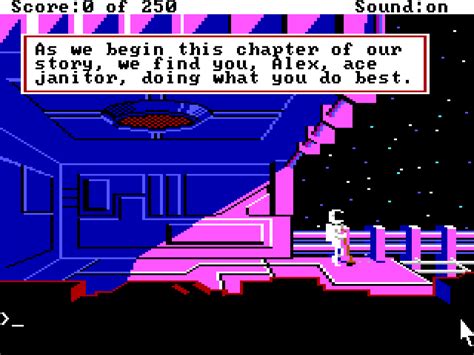Imagine stumbling upon a treasure trove of forgotten source code from a classic video game, preserved by a disk duplication blunder. The Space Quest II Master Disk story unveils a unique blend of retro game development practices and unintended discoveries. The Sierra games of the past, like Space Quest II, hold a special place in the hearts of many gamers, creating lasting memories and a nostalgic connection to a bygone era.
The user comments surrounding the Space Quest II incident offer a glimpse into the world of disk duplication in the late 80s and early 90s. From accidental remnants of source code to partial file recovery techniques, the conversation delves into the intricacies of preserving software artifacts from the past. It’s a reminder of the challenges developers faced in an era before modern version control systems and automated build pipelines.
One user reminisces about the painstaking efforts required to solve puzzles in Sierra games, where trial and error often led to unexpected deaths and frustrating gameplay moments. These anecdotes highlight the intricate design choices and unique challenges that defined the adventure gaming genre of that era. While the slow pace of early games may deter modern players, it evokes a sense of nostalgia for those who grew up with these classic titles.
The unintentional leaks of source code, like the AGI interpreter fragments found in Space Quest II and other Sierra disks, offer a rare peek behind the scenes of game development history. The hidden remnants serve as a time capsule, preserving the legacy of innovative coding practices and manual disk duplication methods that shaped the industry’s evolution. These artifacts provide valuable insights for retro gaming enthusiasts and software archaeologists alike.
The discussions sparked by the Space Quest II blunder touch on themes of preservation, reverse engineering, and the intricate details of hardware limitations from the past. The challenges of managing source code, overwriting data on disks, and the legacy of DIY disk duplication machines add layers of complexity to the untold stories of game development pioneers. Each comment uncovers a piece of the broader narrative, highlighting the community’s shared passion for uncovering hidden gems in gaming history.
As the digital landscape continues to evolve, the lessons learned from the Space Quest II Master Disk blunder resonate with developers and enthusiasts alike. The inadvertent leaks of source code serve as a testament to the enduring legacy of early game development practices and the importance of preserving historical artifacts in the digital age. Through conversations sparked by user comments, we unearth a wealth of insights into the untold stories of software development and the enduring impact of classic games on generations of players.
The Space Quest II saga stands as a testament to the unexpected discoveries that lie within vintage software artifacts. From hidden source code fragments to unique disk duplication quirks, the continuum of technological progress intertwines with the nostalgia of retro gaming experiences. This unintended legacy sheds light on the intricate tapestry of the gaming industry’s evolution, inviting enthusiasts to explore the hidden recesses of software history and uncover the secrets of bygone eras.
Reflecting on the Space Quest II Master Disk blunder, we are reminded of the delicate balance between preservation and progress in the world of technology. The user comments serve as a mosaic of insights, weaving together personal anecdotes, technical expertise, and shared memories of classic gaming adventures. As we unravel the threads of the past, we discover new pathways to appreciate the enduring impact of vintage games and the timeless appeal of the digital treasures they hold.


Leave a Reply